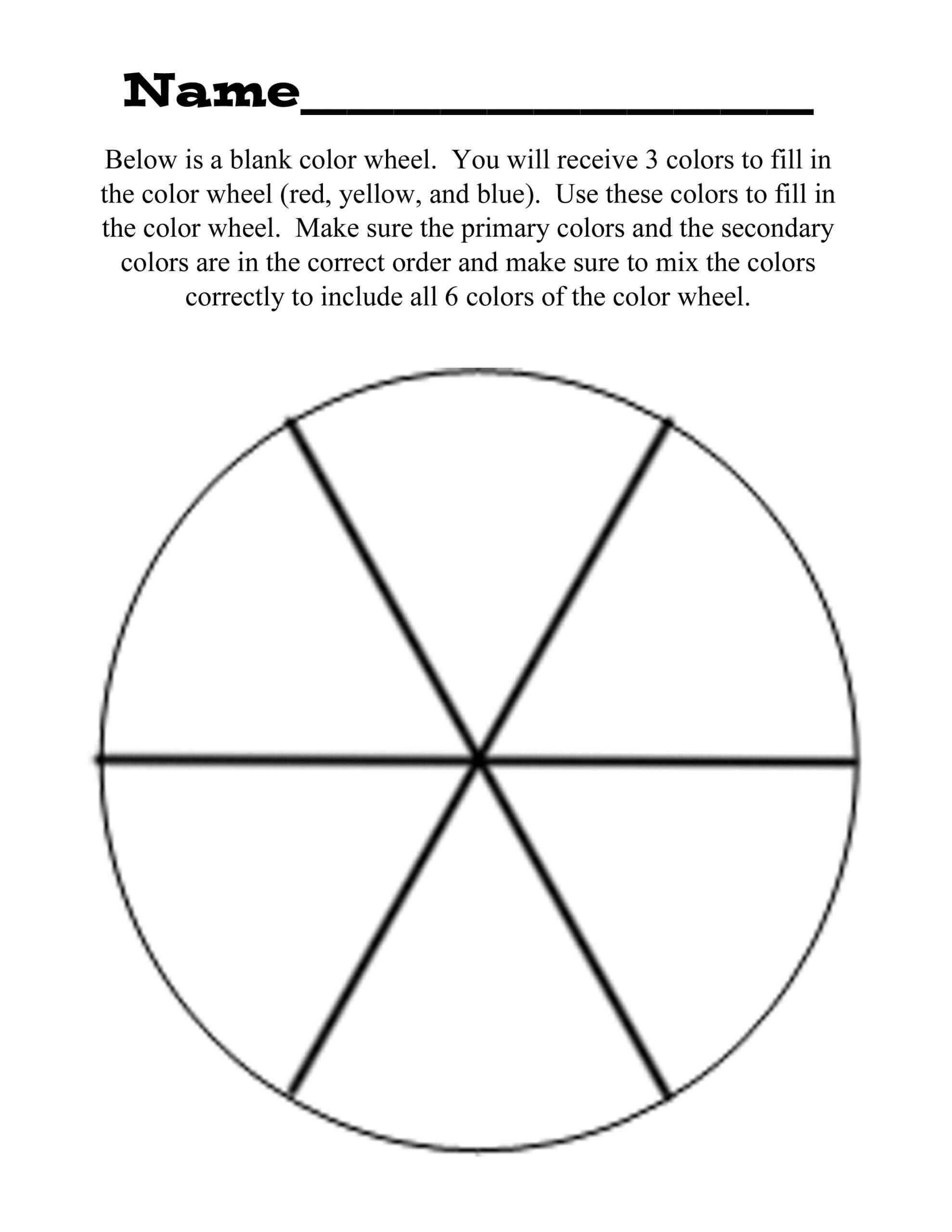When it comes to design and visual arts, the color wheel is an essential tool. A color wheel is a visual representation of colors arranged according to their relationships with each other. It helps artists and designers to create harmonious color schemes that are pleasing to the eye. In this post, we will discuss a blank color wheel template that you can use as a guide for your next design project.
Blank Color Wheel Template
 The above image is a blank color wheel template that you can use for your designs. It consists of twelve colors arranged in a circular shape, with each color placed opposite to its complementary color. The twelve colors include three primary colors, three secondary colors, and six tertiary colors. Primary colors are red, blue, and yellow, while secondary colors are orange, purple, and green. Tertiary colors are created by mixing primary and secondary colors.
The above image is a blank color wheel template that you can use for your designs. It consists of twelve colors arranged in a circular shape, with each color placed opposite to its complementary color. The twelve colors include three primary colors, three secondary colors, and six tertiary colors. Primary colors are red, blue, and yellow, while secondary colors are orange, purple, and green. Tertiary colors are created by mixing primary and secondary colors.
Color Wheel Relationship
The color wheel helps designers understand the relationship between colors. The primary colors are placed at equal distances from each other, indicating that they are equally important. The secondary colors are placed between the primary colors, indicating that they are created by mixing two primary colors. The tertiary colors are placed between the primary and secondary colors, indicating that they are created by mixing a primary and a secondary color.
Color Wheel Harmony
The color wheel also helps designers create harmonious color schemes. Harmonious color schemes are created by using colors that are related to each other on the color wheel. There are several types of harmonious color schemes, including complementary, analogous, triadic, and tetradic color schemes.
Complementary Color Scheme
A complementary color scheme is created by using colors that are opposite to each other on the color wheel. Examples of complementary colors include red and green, blue and orange, and yellow and purple. Complementary color schemes provide a high contrast and are often used in advertising and branding design.
 The above image is an example of a complementary color scheme in a cooking website. It uses the combination of green and red to create a high contrast and catch viewers’ attention.
The above image is an example of a complementary color scheme in a cooking website. It uses the combination of green and red to create a high contrast and catch viewers’ attention.
Analogous Color Scheme
An analogous color scheme is created by using colors that are adjacent to each other on the color wheel. Examples of analogous colors include red, orange, and yellow, or blue, green, and yellow. Analogous color schemes provide a gentle and calming effect and are often used in natural and organic design.
 The above image is an example of an analogous color scheme in a website design company. It uses the combination of purple, blue, and green to create a natural and organic look and feel.
The above image is an example of an analogous color scheme in a website design company. It uses the combination of purple, blue, and green to create a natural and organic look and feel.
Triadic Color Scheme
A triadic color scheme is created by using three colors that are equidistant from each other on the color wheel. Examples of triadic colors include red, blue, and yellow, or orange, green, and purple. Triadic color schemes provide a vibrant and playful effect and are often used in children’s product design.
 The above image is an example of a triadic color scheme in a yoga card design. It uses the combination of blue, red, and yellow to create a vibrant and energizing look and feel.
The above image is an example of a triadic color scheme in a yoga card design. It uses the combination of blue, red, and yellow to create a vibrant and energizing look and feel.
Tetradic Color Scheme
A tetradic color scheme is created by using two pairs of complementary colors. Examples of tetradic colors include red and green, blue and orange, and yellow and purple, with each pair opposite to each other. Tetradic color schemes provide a bold and adventurous effect and are often used in fashion and interior design.
 The above image is an example of a tetradic color scheme in an interior design. It uses the combination of blue, yellow, orange, and grey to create a bold and adventurous look and feel.
The above image is an example of a tetradic color scheme in an interior design. It uses the combination of blue, yellow, orange, and grey to create a bold and adventurous look and feel.
In conclusion, the blank color wheel template is a useful tool that can help designers create harmonious color schemes that are visually appealing. Understanding the color wheel relationship and harmony and using different types of color schemes, such as complementary, analogous, triadic, and tetradic, can help designers create designs that stand out and catch viewers’ attention. So, go ahead and try the blank color wheel template for your next design project. Happy designing!